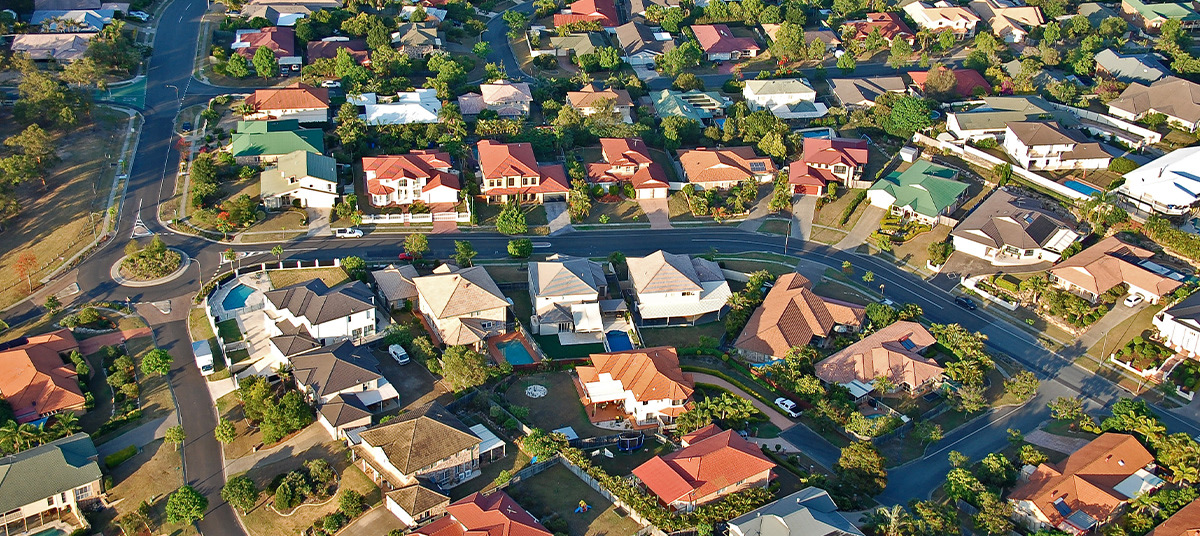
Annual building approvals are up by almost three-quarters, but some industry bodies are urging politicians more reform is needed to fix the housing crisis.
Total dwellings approved inched 0.3 per cent lower in February, following a 6.9 per cent rise in January, according to seasonally adjusted data from the Australian Bureau of Statistics (ABS).
The annual growth rate for building approvals picked up by 25.7 per cent.
Approvals varied across building types, with private dwellings excluding houses falling 1.5 per cent, while private sector house approvals were up 1.0 per cent.
Annually, approvals for dwellings excluding houses rose 73.1 per cent while the same measure for houses was up 5.2 per cent.
Harry Ottley, an economist at the Commonwealth Bank of Australia (CBA), said the improvement in approvals had been stronger than expected.
“Monthly approvals are still moving higher in trend terms, but there has been a switch, the growth driver is now private multi-unit dwellings while detached approvals have eased a touch in recent months,” he said.
“We do expect further improvement in building approvals over 2025 but the improvement to date has been stronger than we anticipated.
“The interest rate cutting cycle should see approvals continue to lift.”
Approvals ‘well below target’
Master Builders Australia said that building approvals remained steady but were “well below target”.
The trade body’s chief economist Shane Garrett said: “We are starting to see a recovery in the market. Over the year to February 2025, new home building approvals are up 8.4 per cent.
“Higher density home building approvals did most of the heavy lifting, which is great news for renters and first home buyers.
“But there’s still a long way to go if we are going to meet the 1.2 million new homes target under the Housing Accord.”
Master Builders, which represents the building and construction sector, has previously raised concerns that supply issues meant Australia would fall short of its 1.2 million new homes target by 166,000 homes over the next five years.
Garrett said: “Over the year to February, 177,400 new homes were approved, well below the 240,000 annual target.”
The Housing Industry Association (HIA) said that despite home approvals rising, reforms were needed to meet the 1.2 million homes target.
HIA senior economist Tom Devitt said: “The RBA’s February rate cut will provide a welcome extra boost [to the housing market], but structural reforms are needed to properly address Australia’s housing affordability crisis.
“Reforms are required across multiple policy fronts, including skilled migration, tax, regulation, planning, approvals, land supply and infrastructure provision.”
Housing in the spotlight as election looms
In the Labor Party’s budget and the Coalition’s budget reply last week, housing featured prominently.
The Albanese government has committed to investing $54 million in prefabricated homes and doubling incentive payments for eligible apprentices if they train up in the housing construction sector.
Opposition Leader Peter Dutton said a Coalition government would invest $5 billion in “essential infrastructure” to “get stalled housing projects up and going”, adding this funding would contribute to the creation of 500,000 new homes.
Commenting on recent pledges by political parties, Master Builders Australia CEO Denita Wawn welcomed the Coalition’s Investment Australia announcement yesterday to reduce regulatory costs and red tape, with a specific working group focused on construction.
“We need to see more investment in housing supply and action on reducing supply barriers,” Wawn said.
“Both major parties are starting to send the right signals as the election campaign unfolds, which reflect policies in our election platform.”
[Related: Broking industry weighs in on housing-heavy budget]
 Login
Login










JOIN THE DISCUSSION